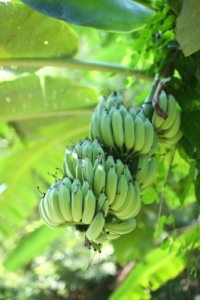
When Golden Rice (rice enriched with Vitamin A) hit the news recently, it seemed like more of the same: some are excited about its potential while others caution about its negative consequences. Lately, I have found myself too often reading and responding to the same arguments on this topic on Facebook and Twitter so I was intending to just watch from the sidelines the sidelines. What makes the debate on Golden Rice different, though, is that it was developed by scientists and the results of this research were handed over to the International Rice Research Institute (IRRI). There are no corporations involved so I wondered what the anti-GMO group would base their argument on this time; now that the all encompassing Monster Monsanto flag cannot be raised. Instead of building up their case with evidence, however, they decided to go the “shout louder” route and opted to destroy a field of trial golden rice being developed by IRRI in the Philippines.
Timely and accurate reporting ensured that we learnt that the farmers who were supposed to be protesting actually watched in dismay, while a crowd which was brought in for the purpose vandalized the field. This has provoked a strong reaction and protests from scientists the world over who came out in support of the freedom to conduct scientific research. This is, by no means, an isolated event. Incidents of vandalism of experimental work in GMOs is so rife that Switzerland recently found that about three quarters of the research budget for GMOs was actually being used for security. Those who demand the freedom to make their choices are, apparently, not too keen on freedom for others to make their own discoveries.
Then came this piece questioning the need for genetic modification of food and there were some points that really merit further discussion. First, the fortification of rice with Vitamin A through genetic modification does work. There is a suggestion that eating more carrots or yams or distributing supplements might be just as effective in terms of health outcomes and less expensive than the money spent on GM research. Here, we need to open a little window into the world of those who would benefit most from this technology. The children suffering from Vitamin A deficiency often belong to the poorest sections of society, living in remote rural areas or urban slums. Distributing supplements to the would require the use of a public distribution system which can just as effectively used to distribute golden rice itself.
Next, why the focus on rice? In the lowest income groups, the largest portion of expenditure on food is on staples like cereal, even fruits and vegetables might be an occasional purchase. In India for example, the lower income group diet might consist of rice and lentils with chillies or onions as a side (hence the turmoil over the current rise in onion prices!). It makes sense to add the nutrient to the food group that is consumed at almost every meal and it is important to remind ourselves that in this world, far removed from our own comfortable one, there would be perhaps two meals a day (and certainly no snacks like those cute carrot sticks that are ubiquitous in schools and sand boxes here); so directing the nutrient in the most effective way is crucial. Carrots, yams or any other vegetable would be available only in season (unlike rice) and even then might not make the budget of many households; thus, they are not the best candidates for addressing the deficiency.
Of course, the best outcome would be for the diet to consist of golden rice and also carrots/yams. This brings us to another point of contention. Why frame this debate as an either/or question? There is a grave problem to be addressed here, let us bring the best combination of tools to the table to solve it. Let us celebrate Golden Rice as much as fortified pearl millet and let us do all we can to bring fresh produce to kitchens all over the world.
And then, of course, comes the question of safety. GMOs, we are cautioned, have not been proven safe for human consumption. So let us look at it one more time: the safety and benefits of genetic modification have been endorsed by many institutions so there is no credibility issue here. If one chooses to mistrust these institutions, then that is their personal choice and this should not be allowed to squander the chance to prevent blindness and death for millions of children. Again, we see the demand for freedom to choose for a certain section at odds with their acceptance of others’ right to the same.
No decision comes without a cost and opting for any course of action will involve a cost: do we allow children to to suffer now and try to find a different solution or alleviate suffering with the knowledge that we have today. (An excellent explanation of costs is here). Would we find a solution that satisfies the opponents of genetic modification? How long would this take if we started today? All this is uncertain. What is certain, however, is that we have a tool that can prevent blindness and death in children today and millions of children in need of it.











